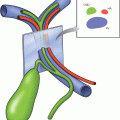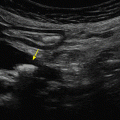-26 Professional Component
Unmodified ultrasound CPT codes are “global” service codes, where the technical and professional components are combined. Technical component refers to the facility portion, and includes equipment cost and maintenance, technician services, and supplies. Professional component refers to the physician interpretation services accompanied by a separate, distinctly identifiable report. When a physician uses an ultrasound machine in the operating room, for example, the machine is typically owned and maintained by the hospital or facility, and the physician should only bill for the professional component of the procedure (even though the physician may be performing the actual examination). On the other hand, a physician in a private office who owns and maintains the equipment is justified in submitting the unmodified code for an ultrasound examination.
 -50 Bilateral Procedure
-50 Bilateral Procedure
 -51 Multiple Procedures
-51 Multiple Procedures
These modifiers would seem self-explanatory. For example, ultrasound-guided ablation of multiple hepatic lesions would fall into this category, or ultrasound-guided drainage of bilateral breast cysts.
 -52 Reduced Services
-52 Reduced Services
At times the ultrasound examination performed will not fulfill all of the requirements of the CPT code descriptor. An example of this may include using ultrasound guidance for assessment of a pleural effusion, where a complete examination including the mediastinum as described in code 76604 (ultrasound, chest, (includes mediastinum) real time with image documentation) would not be indicated. Note that there exist many separate CPT codes that indicate a “limited” examination, so a “complete” examination with modifier -52 would be inappropriate in this circumstance.
 -53 Discontinued Procedure
-53 Discontinued Procedure
This modifier should be appended when a procedure was started but abandoned due to extenuating circumstances. The portion of the procedure completed as well as a description of the circumstances leading to discontinuance should be documented.
 -59 Distinct Procedural Service
-59 Distinct Procedural Service
Circumstances may arise where a service performed was distinct from a similar or same service performed on that same day. These may include separate sessions on the same day, or a different site, organ, or lesion. As always, adequate documentation of the need for additional procedures is required. To distinguish this from modifier 51, multiple procedures, multiple submissions of the same CPT code with modifier 59 may be submitted, whereas modifier 51 is used with a singly submitted procedure code. An example for this may be ultrasound-guided removals of foreign bodies in two separate anatomic regions.
 -76 Repeat Procedure by Same Physician
-76 Repeat Procedure by Same Physician
Repeat examinations on the same day by the same physician may be submitted as long as documentation for the necessity of the examination is provided. An easily understandable scenario is that of a FAST examination, repeated for hemodynamic changes. The second examination contains the modifier, not the first.
 -77 Repeat Procedure by Another Physician
-77 Repeat Procedure by Another Physician
A physician with a different TIN who performs a repeat procedure as above would append modifier 77 to the procedure code.
A reference-coding guide is included at the end of this chapter in an appendix, categorized by the specialties contained in this text.
DOCUMENTATION AND ARCHIVING
In order to fulfill billing compliance regulations the following documentation is required: (1) medical necessity; (2) image interpretation; and (3) image archive. Addressing each element specifically, the medical necessity for the utilization of ultrasound must be clearly recorded. According to the American College of Radiology guidelines, this requirement is fulfilled with documentation of relevant history (including known diagnoses) and signs and symptoms. Relevant diagnosis codes (ICD-9, or, after October 2013, ICD-10) are often used by payers to determine the necessity for a given procedure; indeed, private carriers often use lists of specific ICD codes that support certain CPT codes. Medicare carriers are required to make such lists available to providers.
Next, a written report of findings and interpretations must be maintained in the patient’s medical record, with key identifiers (name, date of birth, and medical record number). Additionally, the report should reflect the examiner and interpreting physician (if different), as well as the date, time, and location of the examination. Key positive and negative findings are typically provided, with specific measurements or quality descriptors (for example, anechoic) as appropriate. When ultrasound guidance is used in conjunction with another procedure, the report of the ultrasound may be included in the procedure note.
Although a relatively recent mandate, it is now compulsory to permanently store relevant images and have these available for future review. As an example to underscore this last requirement, the unambiguous descriptor for the code 76700 is “Ultrasound, abdominal, real time with image documentation, complete.” There are no specific rules from CPT or CMS for image documentation, such as number of views, measurements, or modality of image storage. To meet this ambiguous requirement a minimum of one image should be produced and stored. Good clinical practice dictates the necessity for additional, relevant images as needed. Or, practitioners may look to local policies, such as those in place in the facility where they practice. Of course when performing a complex procedure it may not be possible to acquire and archive images throughout, but representative images obtained before and after the procedure may be considered the relevant images and should suffice. Finally, images and reports are governed by HIPAA policies, and should be stored as secure data.
CREDENTIALING AND BILLING COMPLIANCE
The next chapter of this book is devoted to a detailed and specialty-specific discussion of physician privileging and credentialing in performing and interpreting ultrasound examinations and procedures. With regard to billing compliance, the Center for Medicare and Medicaid Services offers regulatory guidance for the technical component of ultrasound procedures, ie, technologist, equipment, and facility, but no specific requirements for nonradiologist physician credentialing. Similarly, private or commercial insurance (for example, CareCore National) often makes available equipment standards but puts forth no official document on physician credentials. Therefore, nonradiolo-gist physicians integrating ultrasound into their practice should look to fulfilling local privileging and credentialing, whether that be through a facility or professional society, as discussed in greater detail in the credentialing chapter.
SUGGESTED READINGS
ACR-SPR-SRU Practice Guideline for Performing and Interpreting Diagnostic Ultrasound Examinations, Resolution 7, revised 2011, accessed online www.acr.org/guidelines.
CPT Professional Edition 2012, American Medical Association, Chicago, 2011.
Stay updated, free articles. Join our Telegram channel

Full access? Get Clinical Tree




